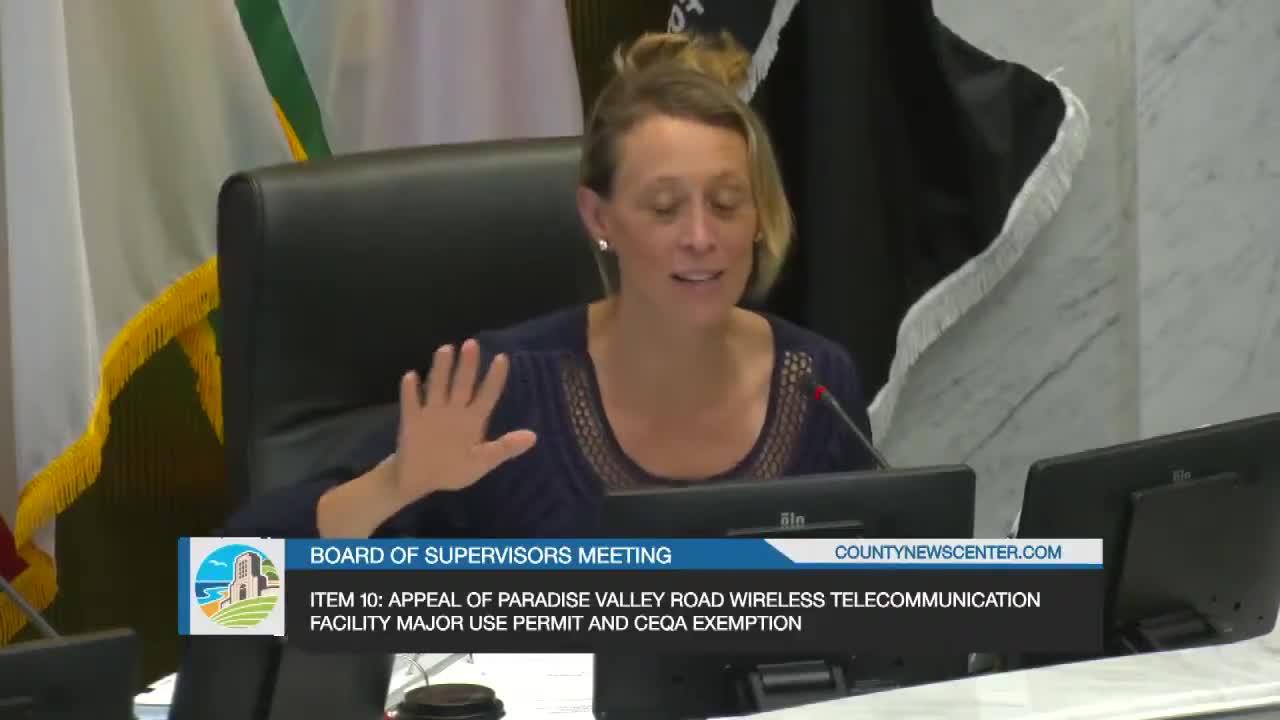Vice Chair Lawson Remer addresses zoning setbacks for small cell towers in San Diego County
June 26, 2025 | San Diego City, San Diego County, California
This article was created by AI summarizing key points discussed. AI makes mistakes, so for full details and context, please refer to the video of the full meeting. Please report any errors so we can fix them. Report an error »

In a recent meeting of the San Diego County Board of Supervisors, a significant discussion centered around the regulations governing the placement of small and large cell towers, particularly the implications of a 300-foot setback for small cell facilities. This regulation, adopted by the county, was established to ensure greater community input and safety as these facilities are now processed as ministerial permits, bypassing the usual environmental review.
Vice Chair Lawson Remer highlighted the confusion surrounding the different setback requirements for small and large towers. While small cell facilities are subject to a 300-foot setback, large towers only require a 50-foot setback from property lines. This discrepancy has raised concerns about the adequacy of community safeguards, as large towers undergo a discretionary review process involving the planning commission, while small towers do not.
The board acknowledged that the current regulations may not adequately protect community interests, especially given that the local planning group had a split vote on a recent proposal for a new cell tower, failing to reach a majority decision. This lack of clarity and representation has left some supervisors questioning the fairness of the process for both the community and the telecommunications companies involved.
As the board deliberated on the next steps, options included denying the appeal against the major use permit for the proposed tower, granting the appeal, or continuing the appeal for further analysis. The discussion underscored the need for a more comprehensive review of the zoning ordinance to address the community's concerns and ensure that future decisions reflect local input.
The meeting concluded with a recognition of the challenges ahead, as supervisors expressed a desire to revisit the regulations governing cell tower placements to better align them with community needs and expectations. The board's actions in the coming weeks will be crucial in shaping the future of telecommunications infrastructure in San Diego County, balancing technological advancement with community safety and representation.
Vice Chair Lawson Remer highlighted the confusion surrounding the different setback requirements for small and large towers. While small cell facilities are subject to a 300-foot setback, large towers only require a 50-foot setback from property lines. This discrepancy has raised concerns about the adequacy of community safeguards, as large towers undergo a discretionary review process involving the planning commission, while small towers do not.
The board acknowledged that the current regulations may not adequately protect community interests, especially given that the local planning group had a split vote on a recent proposal for a new cell tower, failing to reach a majority decision. This lack of clarity and representation has left some supervisors questioning the fairness of the process for both the community and the telecommunications companies involved.
As the board deliberated on the next steps, options included denying the appeal against the major use permit for the proposed tower, granting the appeal, or continuing the appeal for further analysis. The discussion underscored the need for a more comprehensive review of the zoning ordinance to address the community's concerns and ensure that future decisions reflect local input.
The meeting concluded with a recognition of the challenges ahead, as supervisors expressed a desire to revisit the regulations governing cell tower placements to better align them with community needs and expectations. The board's actions in the coming weeks will be crucial in shaping the future of telecommunications infrastructure in San Diego County, balancing technological advancement with community safety and representation.
View full meeting
This article is based on a recent meeting—watch the full video and explore the complete transcript for deeper insights into the discussion.
View full meeting
